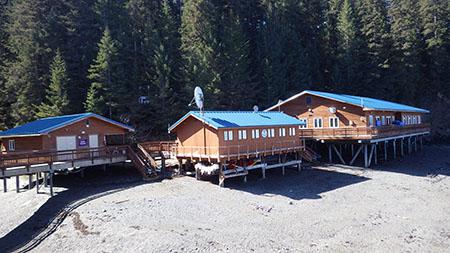
Over the last year, warm water temperatures in the Gulf of Alaska, infamously known as the blob, have dissipated. Warmer water temps are thought to have a hand in massive bird die-offs and a decline in Pacific cod stocks. Now that the three-year period of summer-like marine conditions is over, scientists and fishery managers are eager to assess the full impact of the blob.
The blob first showed up back in the winter of 2013-14 after a high pressure system anchored itself off the West Coast. That led to fewer blasts of cold arctic air from the jet stream, and National Weather Service Climatologist Rick Thoman said that also meant fewer storms in the Gulf of Alaska.
“Actually, hardly any storms moving through that part of the northeast Pacific,” Thoman added “So, we didn’t get that mixing of the ocean layers that occurs when you get strong winds and big waves. So, that lack of mixing helped the water to wind up warming over a fairly large area.”
The blob gathered plenty of headlines during the three years it stuck around. It’s thought to be responsible for declining stocks of forage fish that sea birds depend on, leading to massive murre die-offs. It’s also known to have increased the prevalence of harmful algal blooms that can lead to paralytic shellfish poisoning.
But there’s plenty we don’t know about what the blob did and didn’t do, and scientists like Kris Holderied are now trying to put the pieces together.
Holderied works in the National Oceanic and Atmospheric Administration’s Kasitsna Bay Laboratory near Homer.
But she also works with Gulf Watch Alaska, a program that began monitoring marine conditions and marine life in the northern Gulf just a couple of years before water temperatures rose.
“To understand how these changes in marine conditions affect the species, you know everything from plankton, to fish, to birds, to whales, you really want to see it happen when it’s cold, when it’s warm, when it’s normal,” Holderied explained, “and in a pretty short period of time, we’ve gotten to see all of that. That part is luck.”
Holderied said the data collected by Gulf Watch and other scientists from the start to the end of the blob will help determine if and how other events, such as sea star wasting disease, are connected to warming waters.
Piece by piece, scientists hope to get an idea of what to expect next time a blob-like event occurs.
This big-picture approach isn’t just of interest to the scientific community. Fishery managers are also changing the way they do things.
Steve Barbeaux is a research fisheries biologist with NOAA who collects data on Pacific cod, which saw a roughly 70-percent decline over the past two years.
“In management say prior to 2010, we really were focused on single species,” Barbeaux said. “But since then our program has really developed to kind of look at everything that’s in the ecosystem to tell us the story of what’s going on, and I think this event has really helped us focus on, for cod specifically, what those things in the ecosystem we need to keep an eye on.”
Barbeaux said among those other factors to keep an eye on is competition from different species. While the blob seemed to diminish the food supply for cod, leading to the decline, it may have actually increased the supply for pollock and sablefish.
“And pollock happened to be up in the mid-water column, and there were particular types of zooplankton that were abundant during that time period, and they seemed to do well,” Barbeaux explained. “For sablefish, it might have been the same issue, they don’t go down to the bottom, they were pelagic at those year classes. Those things may have helped out the sablefish and pollock equally.”
Those species’ success could make it more difficult for cod and other impacted species to recover. But the big-picture answers scientists like Barbeaux and Holderied are hoping for may take longer in some areas than others.
It may be harder to tease out impacts on fish with longer life spans, such as halibut, and even fish with shorter life spans will be impacted differently depending on where they were in their life cycle.
“If you were a sockeye salmon in 2014 and just heading out into the ocean, maybe you’re just going to be coming back now or if you were a king salmon, you were affected by the warm conditions early on, you were affected out in the ocean,” Holderied said. “Well, what did that all mean? We’re not going to totally understand that until we see what’s coming back in. Some of these things have longer effects and are lagged, but I think it’s exciting that we have all this information to put together and people working on it.”
Near-normal water temperatures are forecasted to stick around through the summer and for now, most scientists can agree cooler water temps bode well for the ecosystem.




